An important fragment of a fresco depicting St. Ignatius by Giovanni Andrea Carlone (Genoa, 1639 - 1697) has been rediscovered in Genoa .This valuable find represents a significant development in studies of late 17th-century Genoese Baroque painting. The work, which belonged to a private individual, is currently at the Goldfinch Fine Arts gallery where it was studied by Genoese art historian Giacomo Montanari , who recognized it as an autograph. The study was published in the scholarly journal Storia dell’Arte and identifies this fragment as the only surviving evidence of one of Carlone’s most important works, a lost monumental fresco in Genoa’s Jesuit College. This identification not only enriches our knowledge of the artist but also reconfirms his stature and his role as a bridge between the Roman and Genoese artistic milieu in the second half of the 17th century.
The work from which the fragment comes is the Glory of St. Ignatius, a vast fresco that Giovanni Andrea Carlone painted for the vault of the Salone degli Esercizi letterari at the Jesuit College in Genoa in 1683. This fresco constituted the narrative and compositional culmination of an ambitious iconographic program, conceived by Carlone himself after his final return to his hometown in 1677, following an intense and fruitful experience in Perugia and Rome. The complex iconography, according to Montanari, took into account the sermon texts of Giovanni Paolo Oliva, a Genoese Jesuit who had served as General of the Society of Jesus until his death in 1681. We have no images to attest what the Glory of St. Ignatius looked like, but there are written descriptions: we do know, therefore, that from the fresco “radiated that strength,” Montanari writes, “and that light capable of building - through the disciplines of study - the path by which young men could come to receive the gifts of the Holy Spirit, effectively depicted and ’Jesuitized’ in the monumental monochromes that rhythmically punctuate the walls of the hall, on the short sides of which make their appearance - on the altar side - Ignatius and Francis Xavier and - in the background - King Solomon, who had the foresight to ask God as his gift only the ability to discern with justice.”
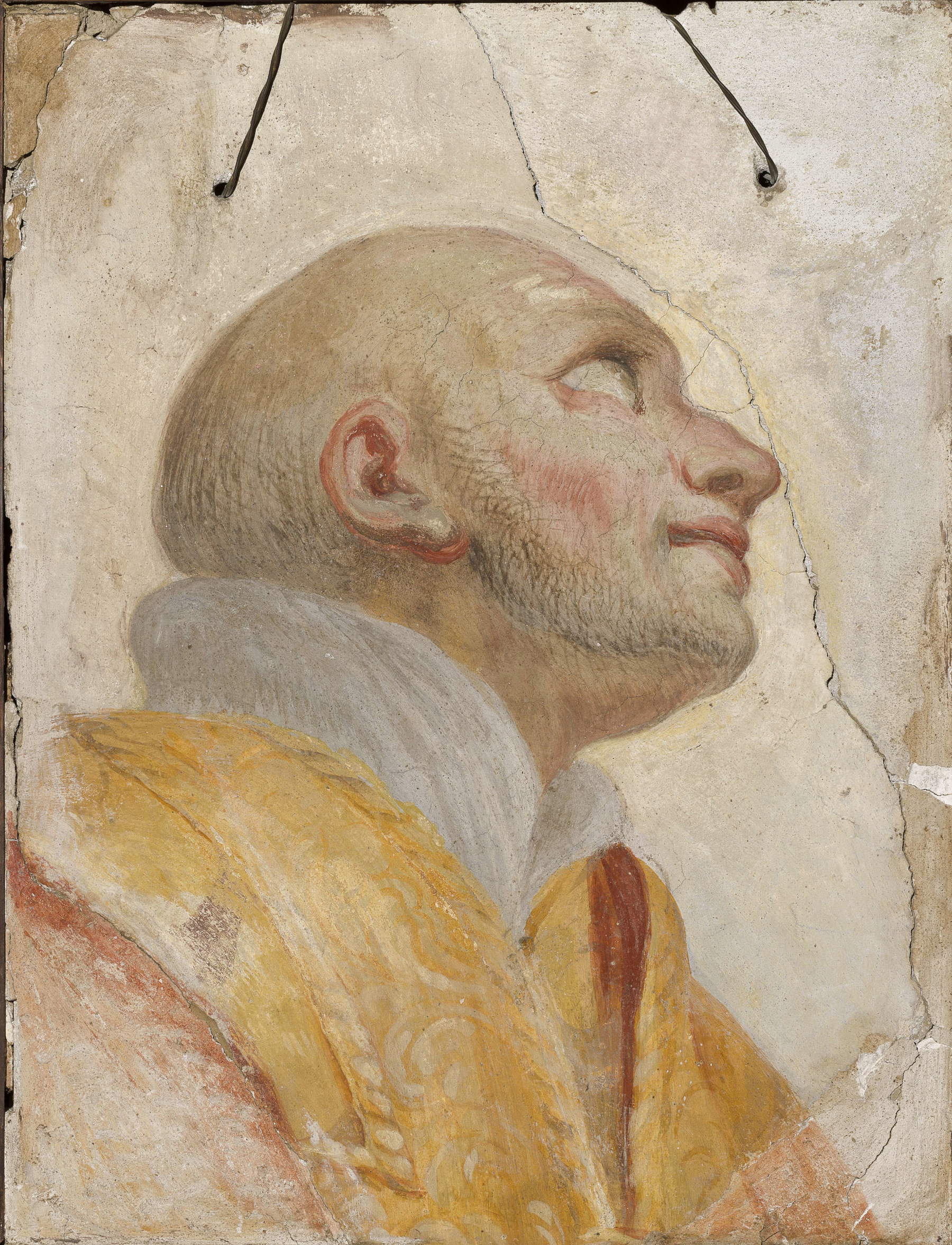
Historical sources, including the edition of Raffaele Soprani’s Lives later updated by Carlo Giuseppe Ratti, explicitly attribute the fresco to Carlone, describing it as a representation of the “Most Holy Name of Jesus, the Blessed Virgin, St. Ignatius and various images alluding to the Institute of the Company.” A 1683 manuscript also documents the commission to paint the front of the altar and the great hall vault, which was completed before the French bombardment of Genoa in 1684. Although much of the decorative apparatus, however repainted, was preserved, the figurative apex of the vault had remained, as mentioned, devoid of any visual evidence.
The destruction of Carlone’s fresco was in fact the result of a sequence of dramatic events that affected the building, now the Aula Magna of the University of Genoa. The College was located on Via Balbi, an exposed position that made it the target of bombardment by Savoy troops in 1849. This action, ordered by General Alfonso La Marmora to suppress city uprisings against Piedmontese hegemony, caused severe damage to the surrounding area. However, the consequences on the building were not immediately apparent. It was not until nineteen years later, on December 29, 1868, that the Genoa Gazette reported the ruinous collapse of the ceiling of the Great Hall, caused by structural damage that had never been repaired by the 1849 bombing. Fortunately, the ceiling collapse caused no injuries, but it necessitated restoration work, entrusted to Giuseppe Isola, who in 1871 created the Triumph of the Science of Ligurians. This work by Isola, which was in turn destroyed during the bombings of World War II and replaced in 1959 by theAllegoria sacra, orSacred Allegory, the fresco by Francesco Menzio still visible today, did not represent the original completion of the iconographic program, but a solution following the collapses.
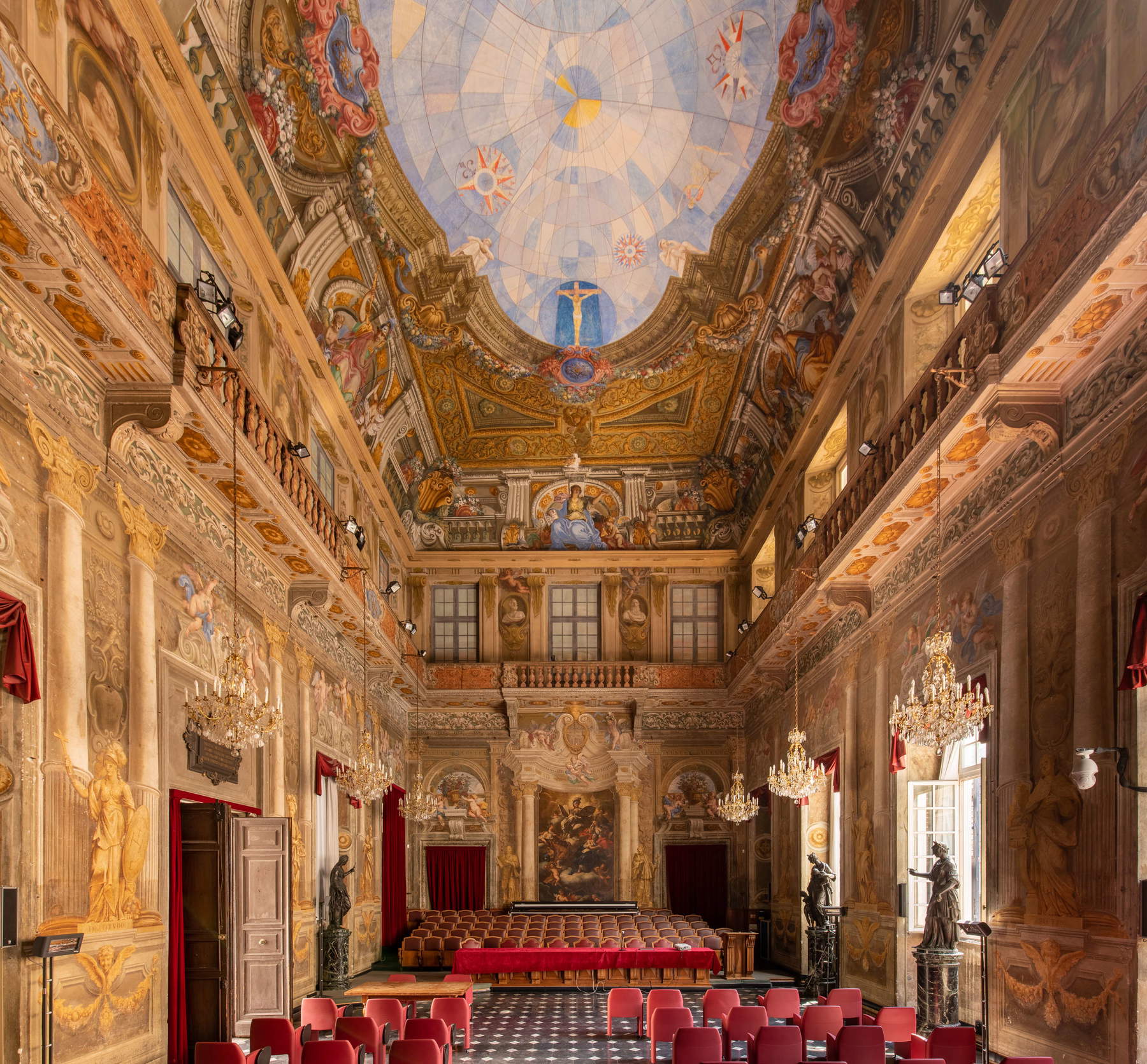
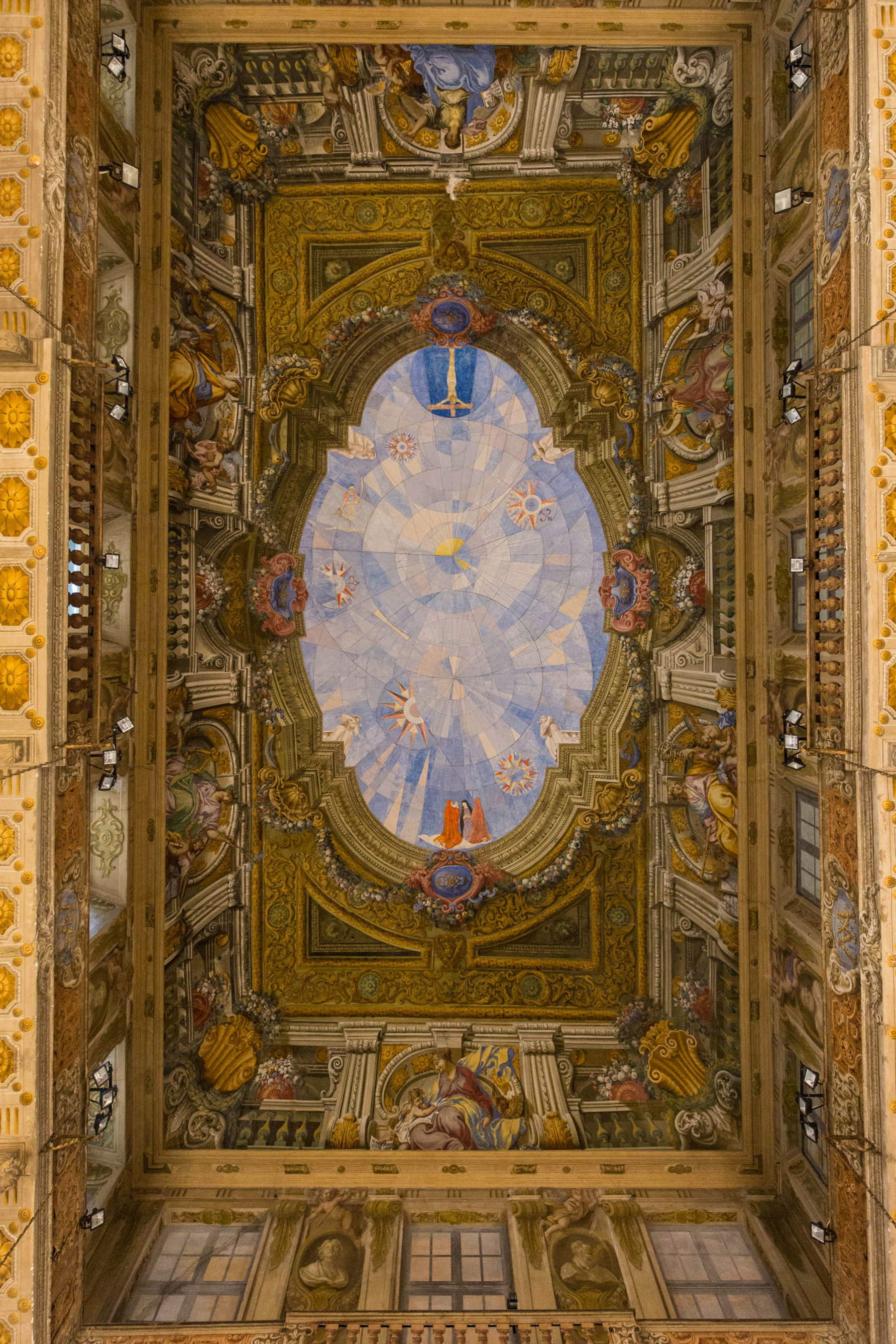
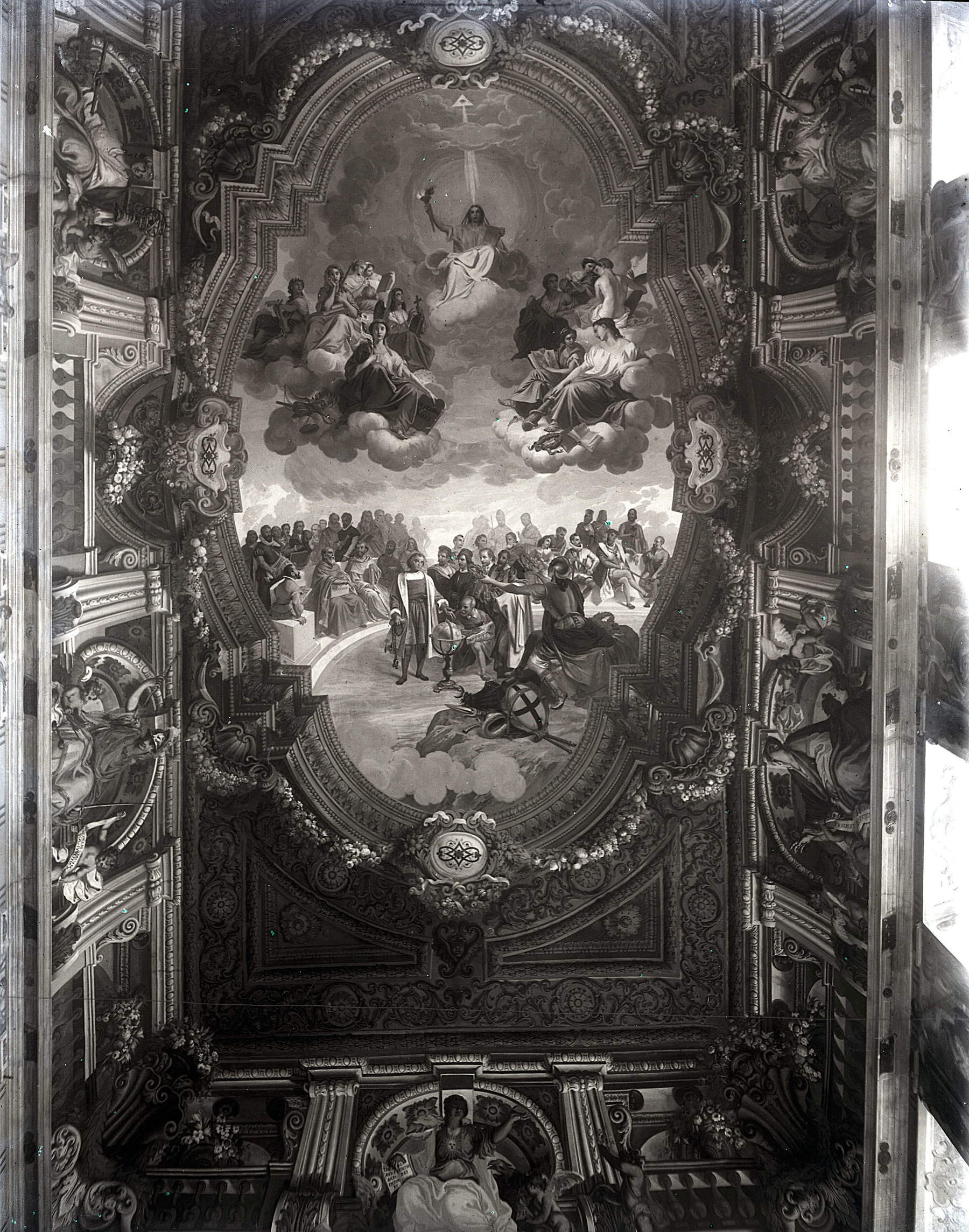
The fresco fragment that was the subject of Montanari’s research, which depicts a head and measures 55x73 cm, has resurfaced after a long oblivion, bringing a new perspective to the study of Carlone’s lost works. Its size suggests that it was part of the large-scale pictorial cycle, with more than life-size figures, typical of a wall or vault decoration. The iconography is clearly that of St. Ignatius of Loyola, identifiable both by his physiognomic features and his priestly habit. Although unknown to contemporary specialist studies, the fragment is not completely unpublished, having appeared in a December 1, 1954 Corriere della Liguria article. On that occasion, the then owner, engineer Edoardo Montagna, told the story.
According to Edoardo Montagna’s 1954 account, the fragment came from the choir of the demolished Peace Church. Also according to the account, the engineer’s father, Carlo Montagna, who, according to him, was in charge of the demolition “seventy years before” the account, allegedly saw the painting among the collapsed fragments and brought it home, identifying it with the effigy of his eponymous saint, namely St. Charles Borromeo. However, Giacomo Montanari notes two significant inconsistencies in this account. The first is chronological: the demolition of the choir of the church of Santa Maria della Pace did not take place seventy years before 1954, but much later, namely from 1906. This implies that Montagna’s father’s recollection should have been sharper, even considering that Edward Montagna, born in 1877, commissioned a survey of the fragment in 1935. The second inconsistency concerns iconography: the habit worn by the saint in the fragment does not correspond to that of St. Charles Borromeo, as Montagna mistakenly assumed (he should in fact have worn the cardinal’s habit: he was evidently confused with St. Charles because of the pronounced features, which are also typical of the Milanese saint), but rather to that of St. Ignatius, as evidenced by the obvious features. Moreover, photographic campaigns prior to the destruction of the church of Santa Maria della Pace do not document any frescoes by Carlone at that Franciscan site.
The stylistic and technical analysis conducted by Giacomo Montanari allowed a certain attribution of the fragment to Giovanni Andrea Carlone. This result was obtained through an in-depth comparison with other frescoed works by the artist, notably the Negrone Chapel at the Gesù in Rome. In the medallion illustrating the Sermon of St. Francis Xavier in that chapel, the upward-facing face of a figure clothed in a red drape shows almost exact superimposibility with the fragment. Similar are the profile of the lips, the foreshortened rendering of the eye and nose, elongated and enlarged in Carlone’s distinctive style. Technical details such as the crisscrossing brushstrokes that give color to the cheek, the extension of the “day” bordering the head, and the carry-over carvings from the cardboard further confirm the authorship of the work, providing tangible evidence to corollary the stylistic data.
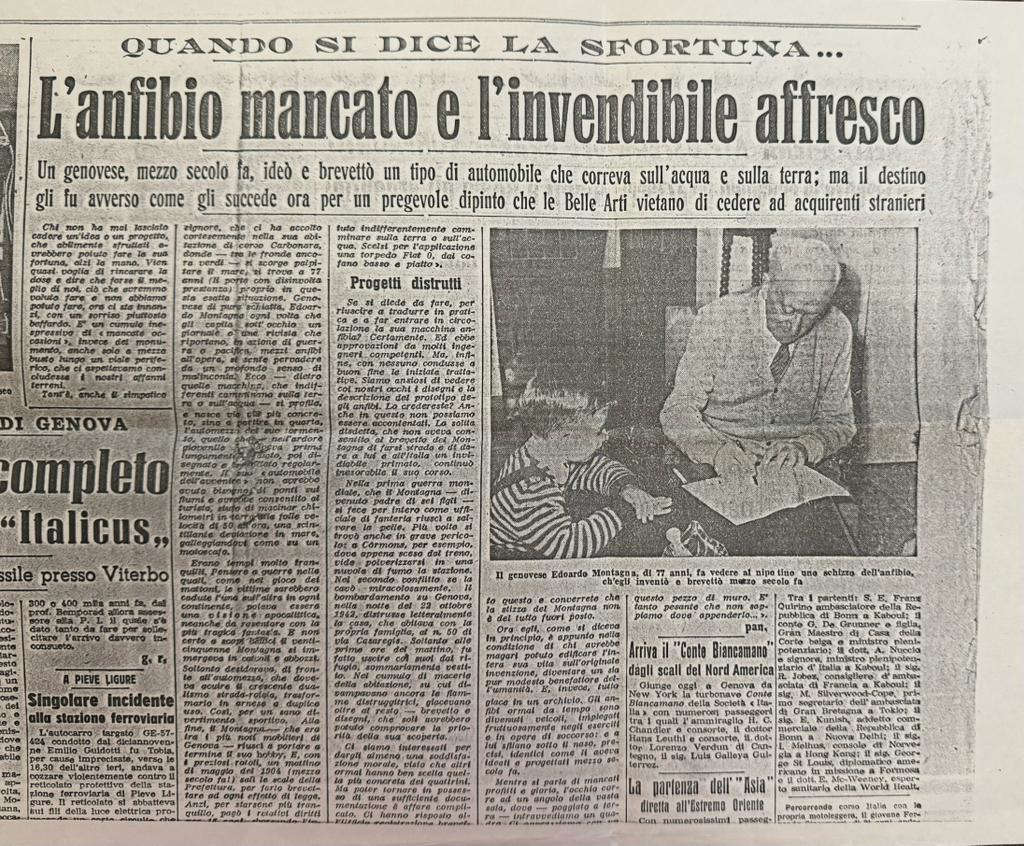
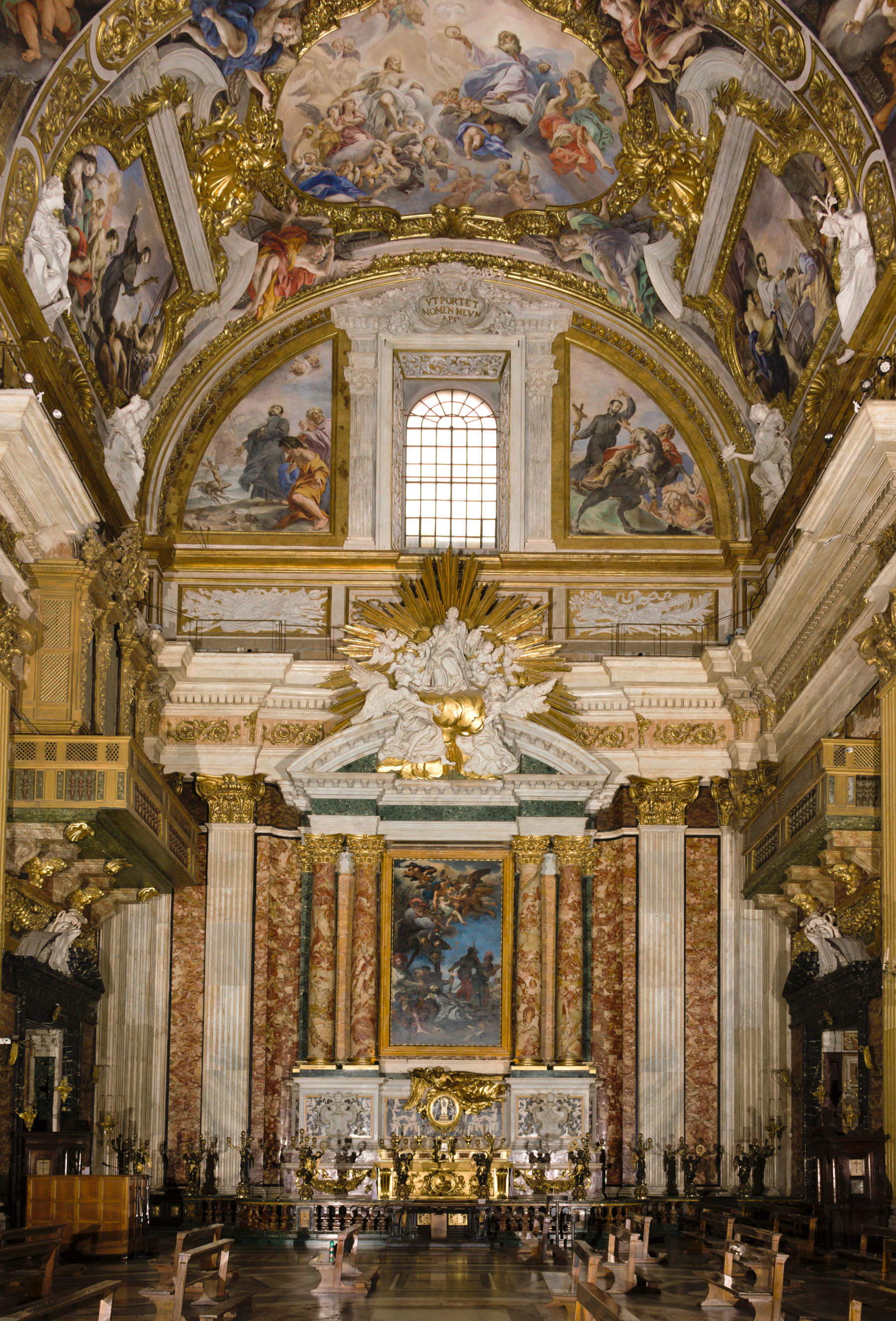
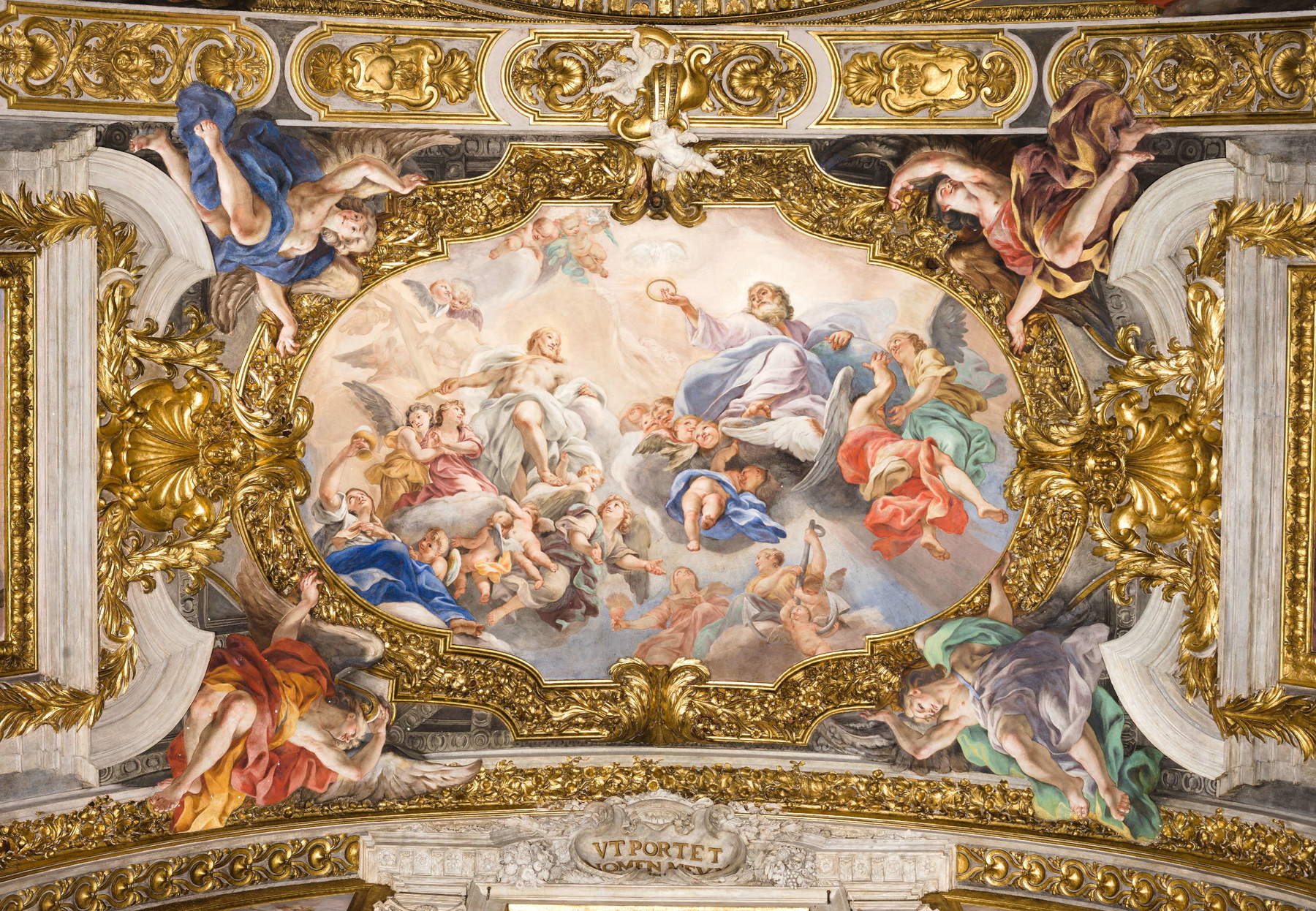
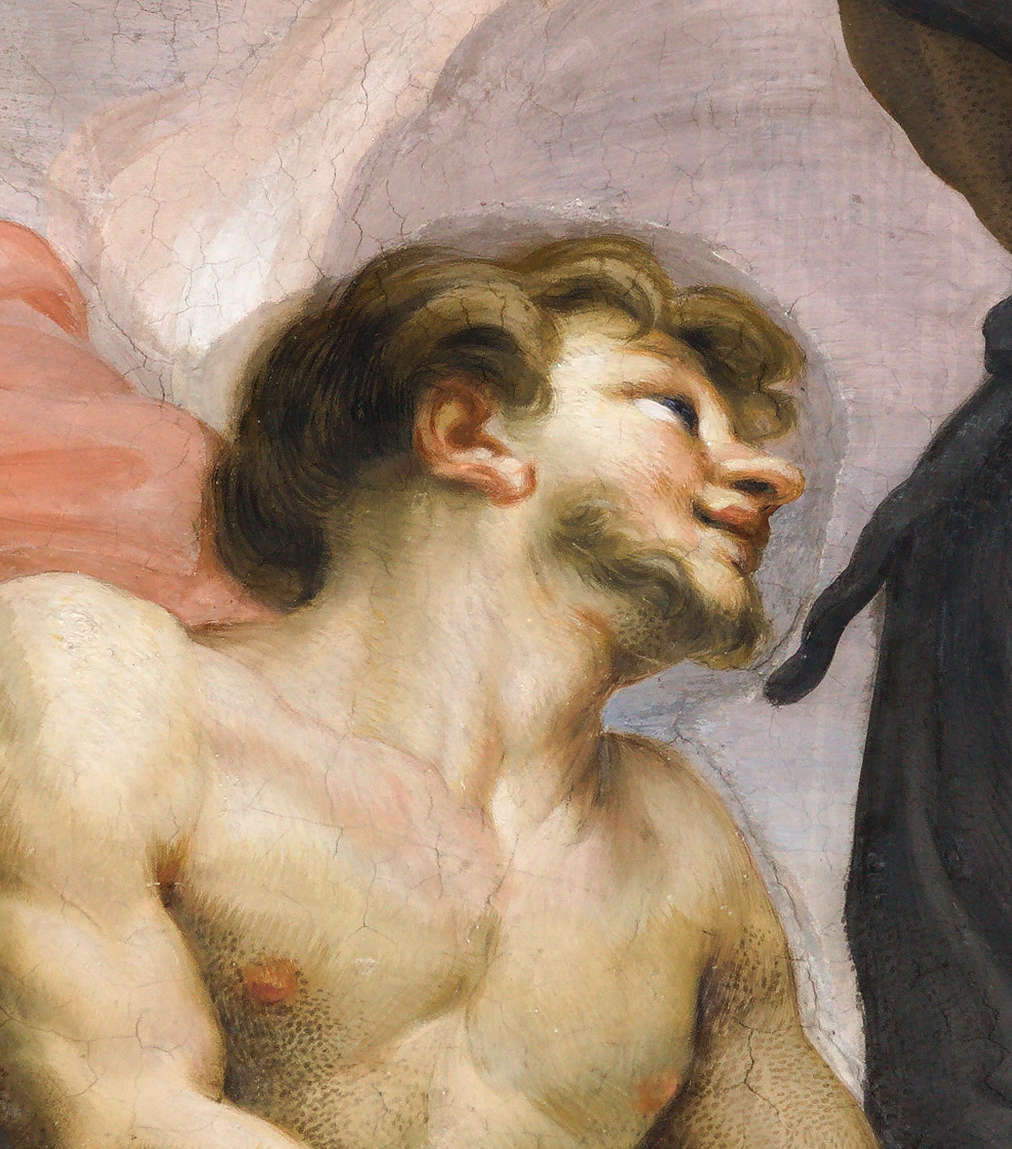
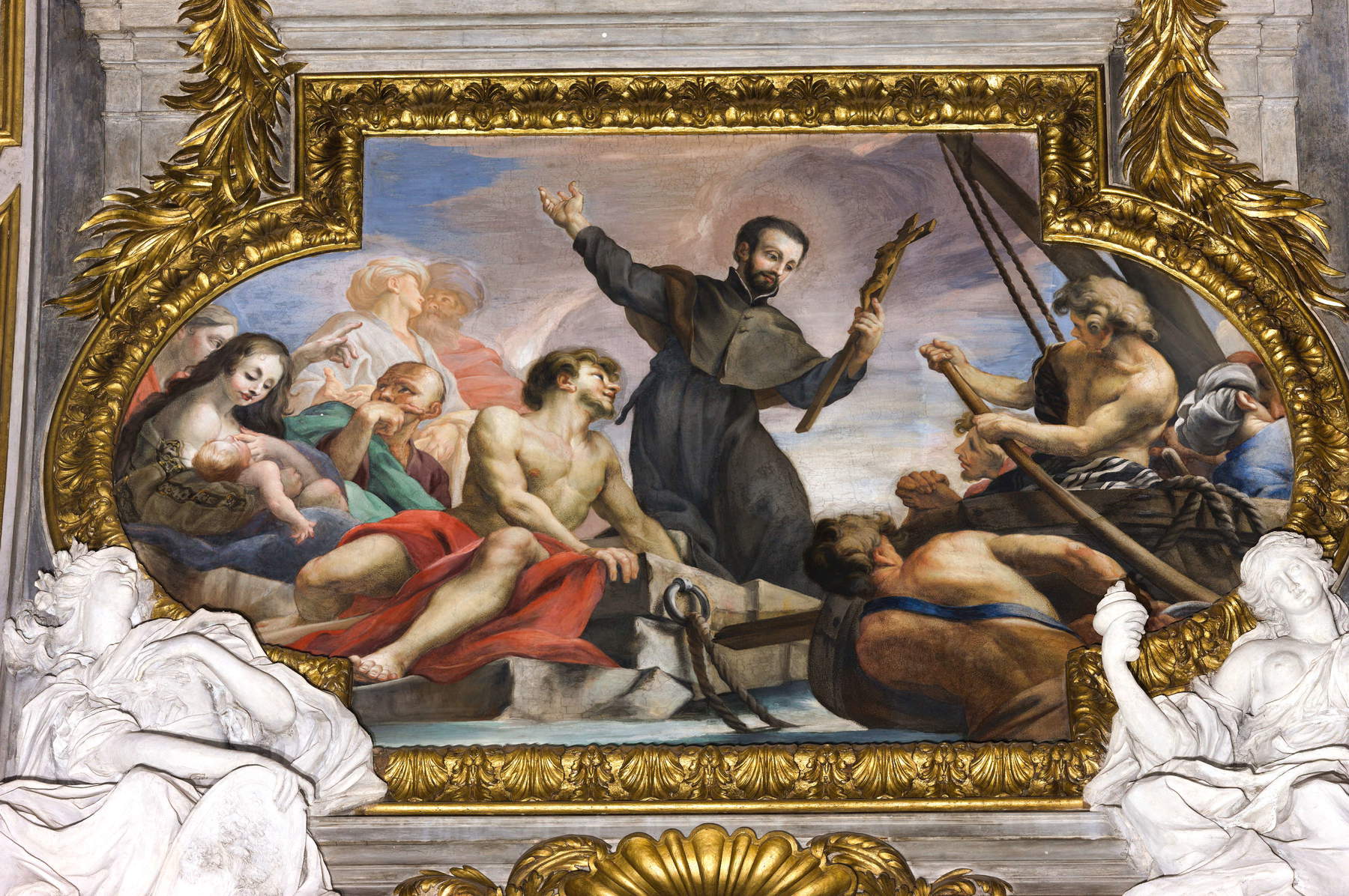
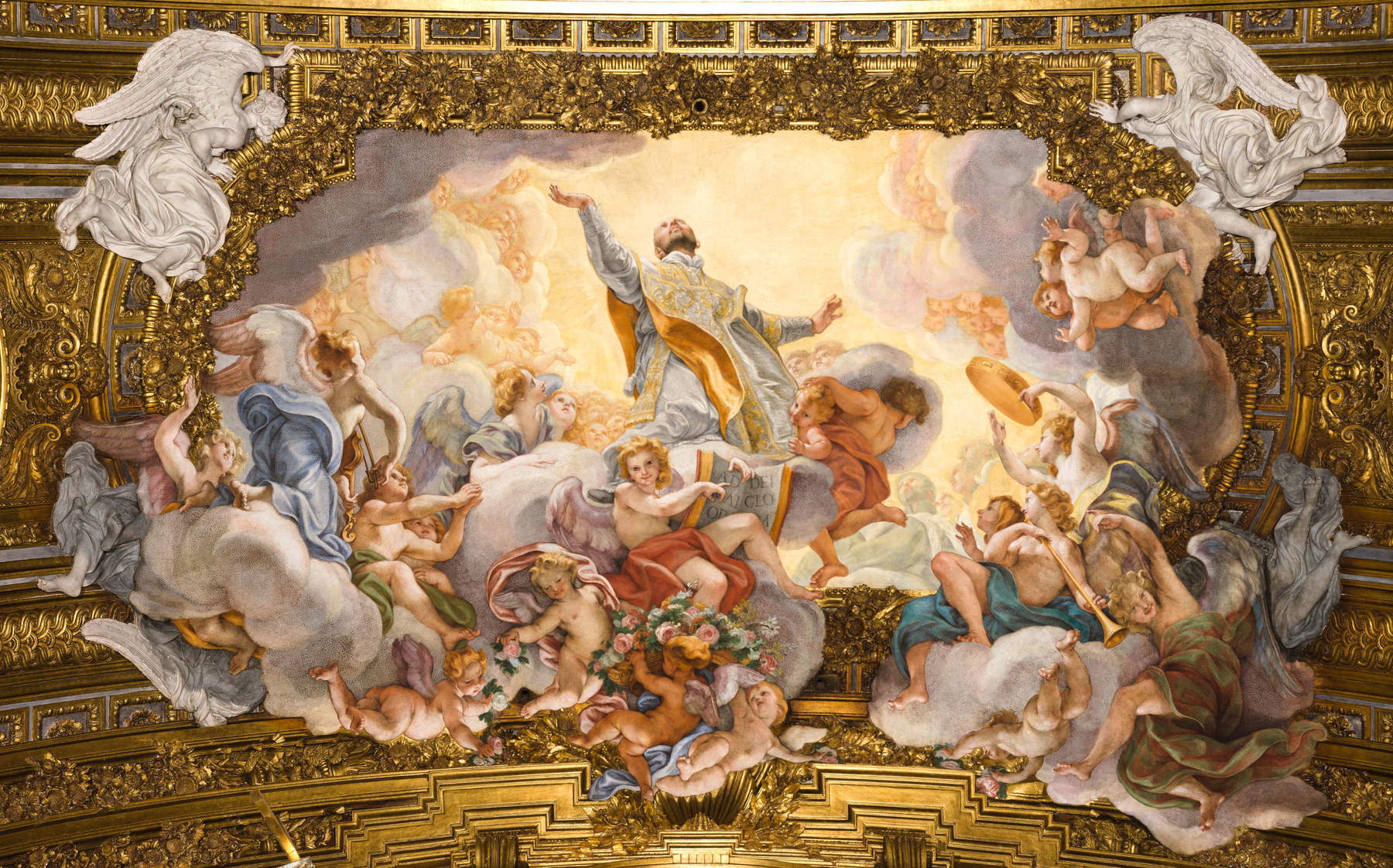
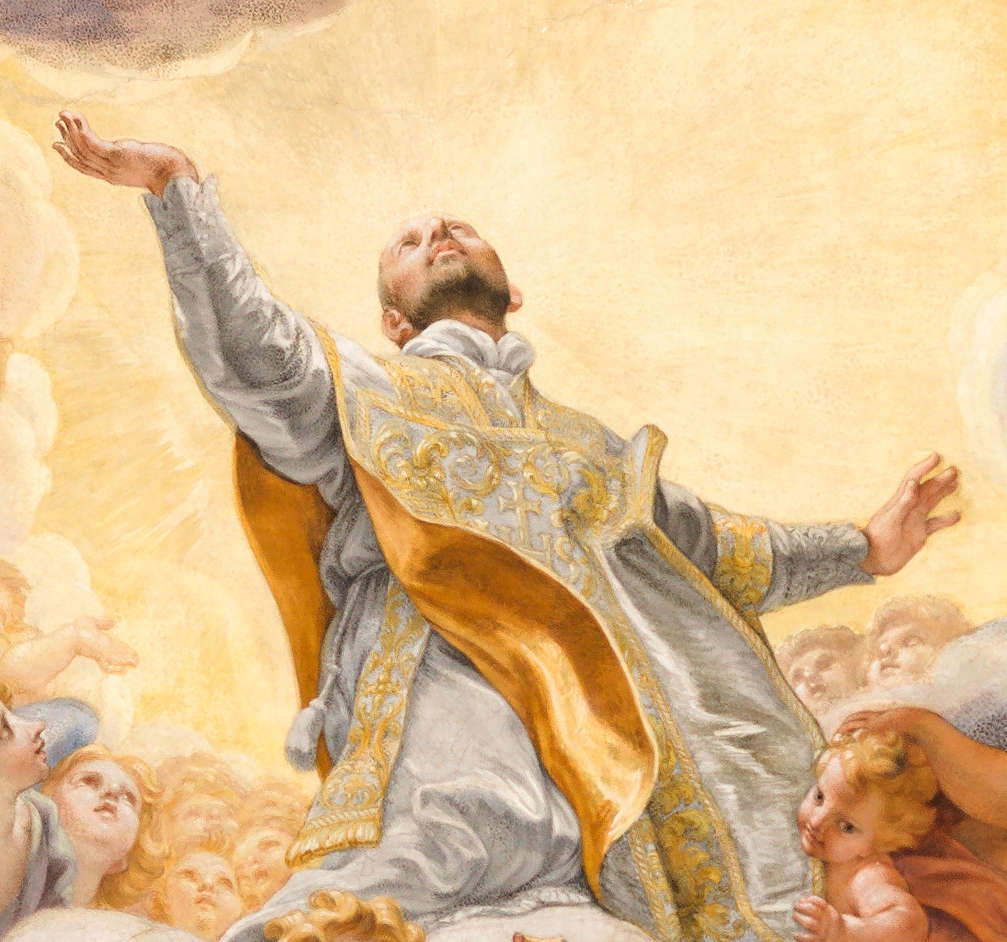
The attribution to Carlone and the irrefutable Ignatian iconography of the fragment open, as noted by Montanari, a very interesting scenario regarding its provenance. In Genoa, documentary sources and historical evidence record only one monumental fresco depicting St. Ignatius by Carlone, which has been lost. The dimensions of the fragment (a head about 40 cm high in a 55x73 cm fragment) are compatible with a work of that scale. The time indications, albeit imprecise, provided by the Montagna family regarding the removal of the fragment around the 1870s coincide with the period of the unexpected collapse of the central portion of the vault of the former College of the Society of Jesus in 1868. Montanari speculates that the St. Ignatius of Carlone, which has so far disappeared without a trace, may have been among the damaged and unsafe parts removed to allow the central oval to be integrated by Giuseppe Isola between 1868 and 1871. The account of Montagna’s father taking away a “memento” of his professional efforts is at this point considered plausible in the context of a damaged decorative complex. Although it is difficult to be certain of Carlo Montagna’s presence in the Aula Magna building site between 1868 and 1871, the indisputable artistic authorship recognized to Carlone, the Ignatian iconography (directly comparable with the depiction of the saint by Giovanni Battista Gaulli known as Baciccio, a Genoese-born but Roman-cultured artist at the Gesù of Rome) and correspondence with available sources make it highly probable that this fragment is to this day recognizable as the only surviving element of that tragic collapse.
The rediscovery of this fragment, albeit partial, constitutes an important compensation for the study of the most significant decoration, both artistically and iconographically, made by Carlone for the Genoese College. This fragment, too, confirms the very high quality of Carlone’s work, a quality that in the portions still preserved in situ is unfortunately obscured by numerous and successive remakes, a consequence of the profound upheavals that that monumental space underwent. The acquisition of this lost testimony therefore rekindles a trace of great interest for Genoese Baroque painting, and more generally for the art of the last quarter of the seventeenth century. Giovanni Andrea Carlone establishes himself in this context as a solid pictorial reference for the Society of Jesus, second only to Andrea Pozzo. The fragment makes it possible to recognize the quality of Carlone’s Genoese frescoes, in continuity with his evidence at the Gesù in Perugia, where he distinguished himself as an autonomous master, and his influential realization of the Negrone Chapel in Rome, a synthesis of the Cortonesque legacy and a response to Gaulli’s Berninism. This discovery thus sheds light on the decisive role of the last great fresco painter of the Carlone di Rovio lineage, a Genoese artist of the second half of the 17th century who was perhaps the most appreciated outside regional borders, and today deserving of careful cognitive recovery by specialist studies and beyond.
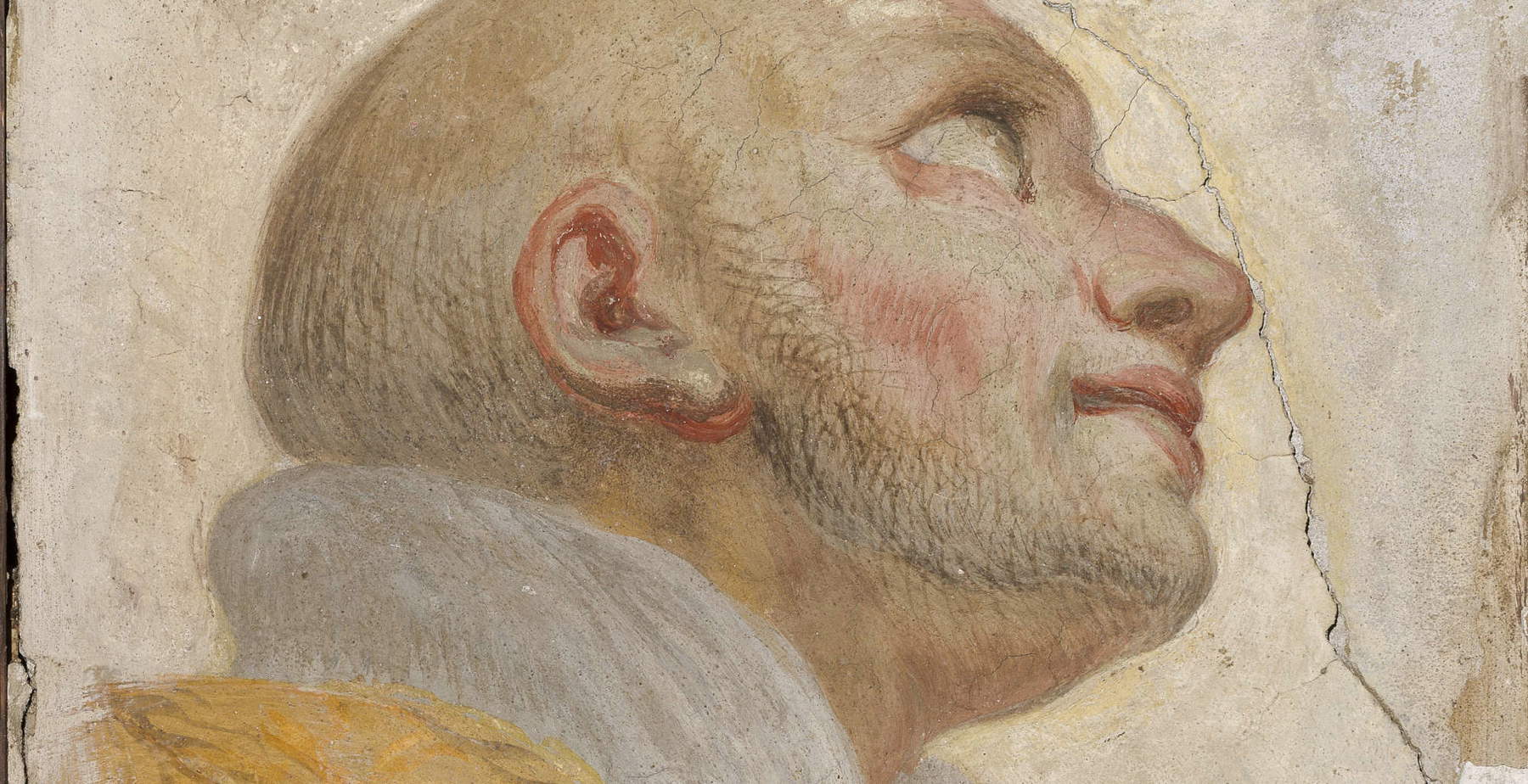 |
| Genoa, precious fresco by Giovanni Andrea Carlone found: sole survivor of spectacular vaulting |
Warning: the translation into English of the original Italian article was created using automatic tools. We undertake to review all articles, but we do not guarantee the total absence of inaccuracies in the translation due to the program. You can find the original by clicking on the ITA button. If you find any mistake,please contact us.